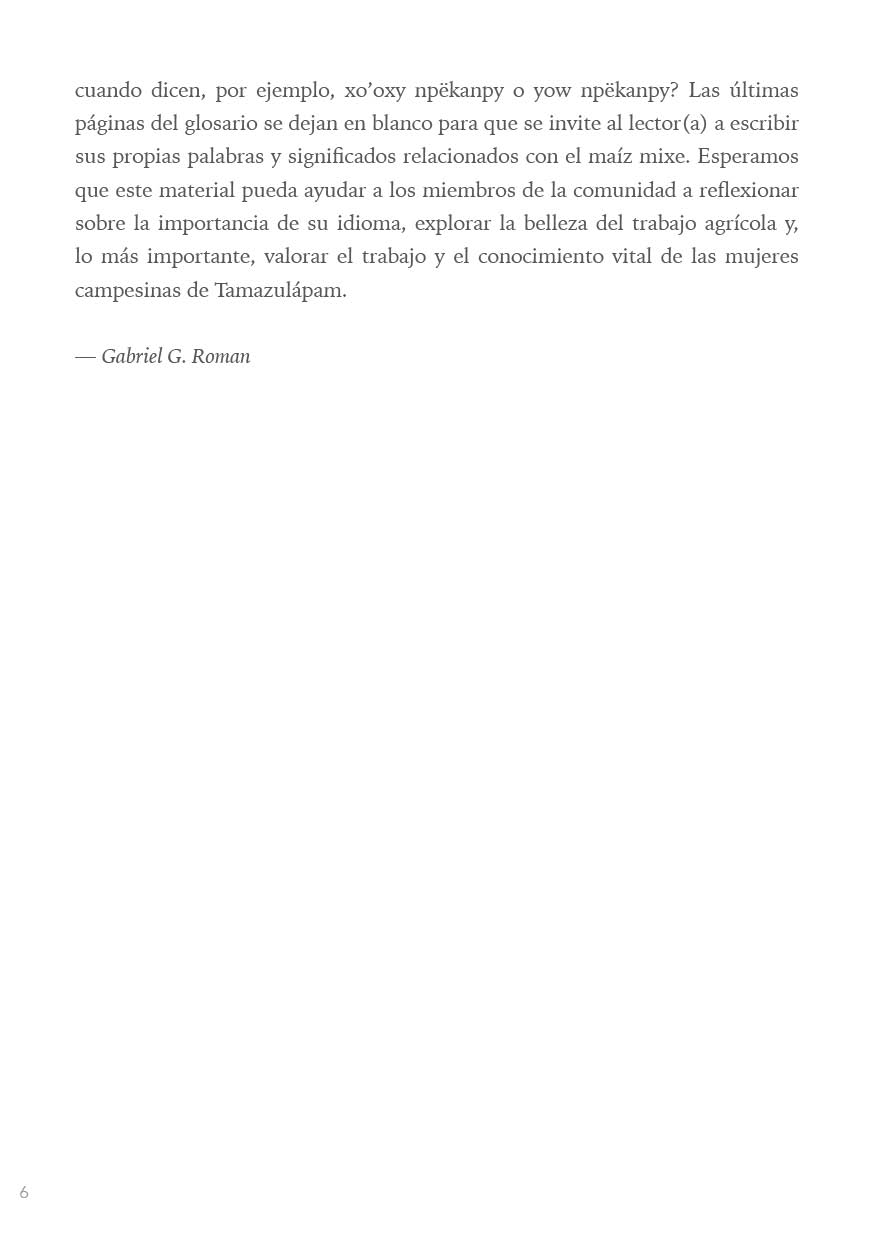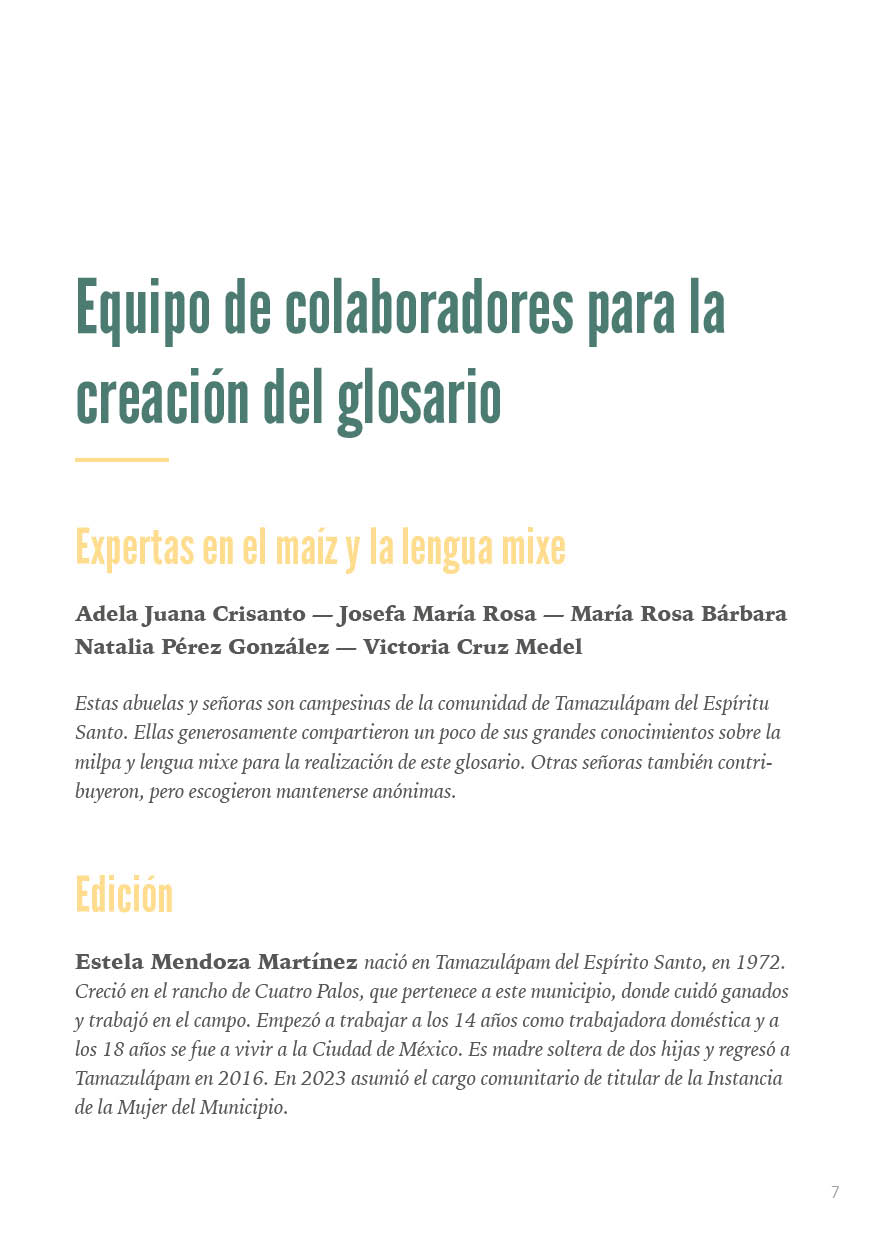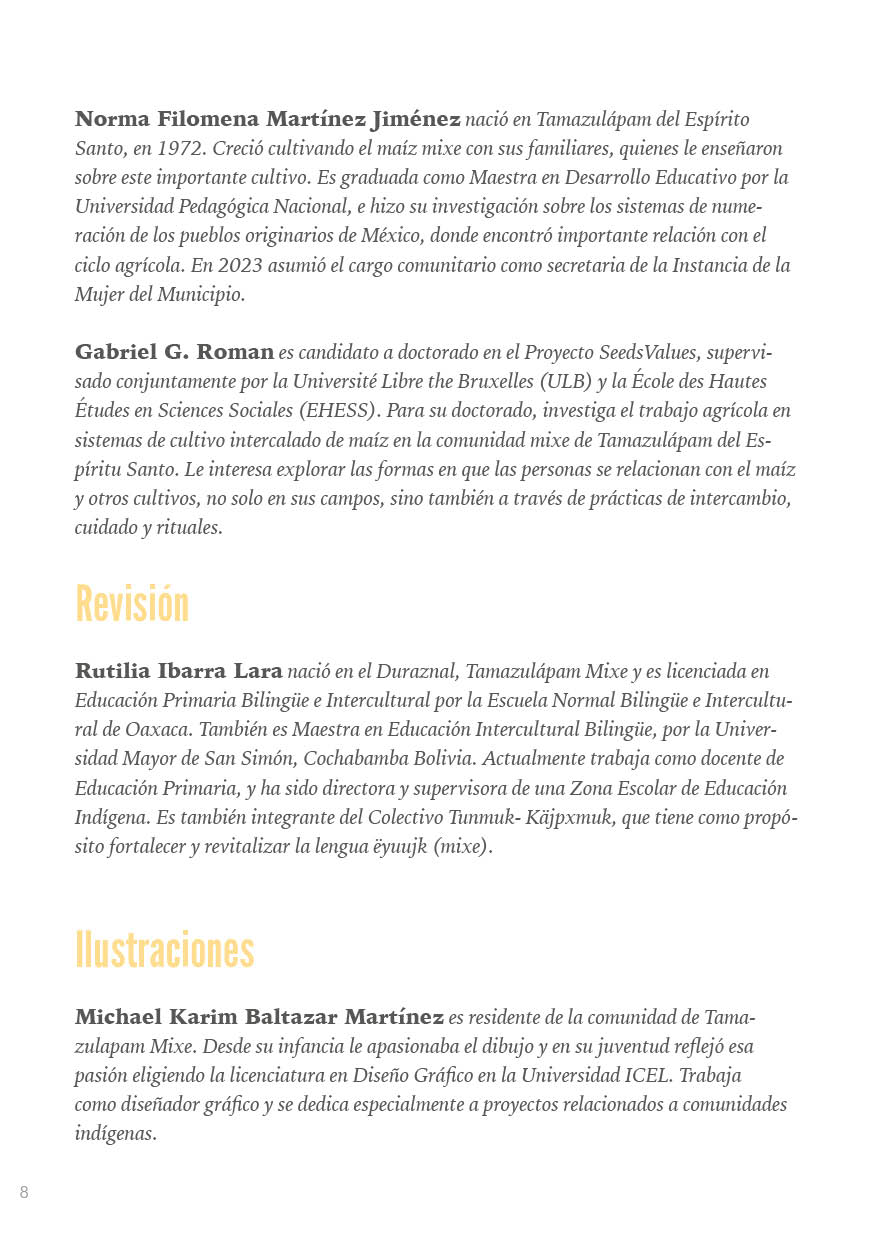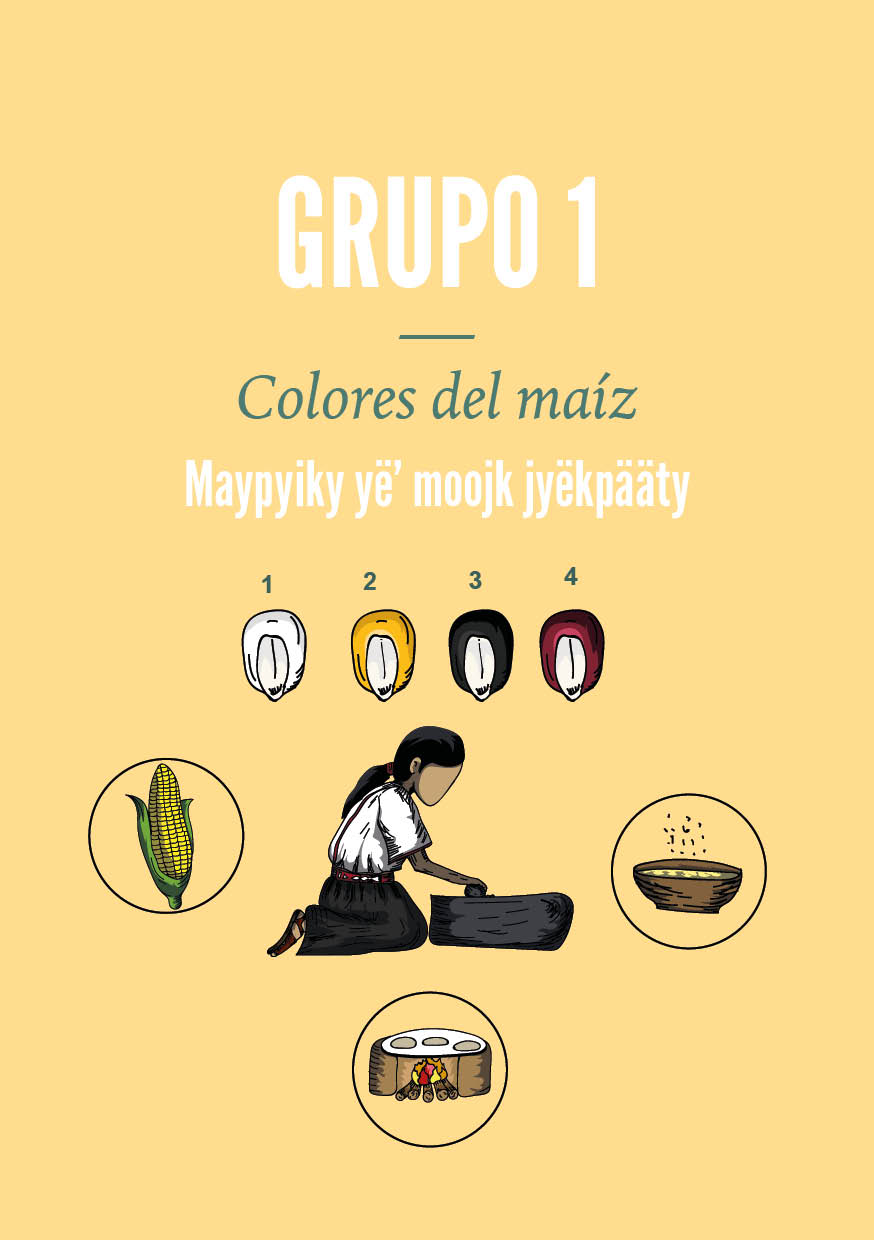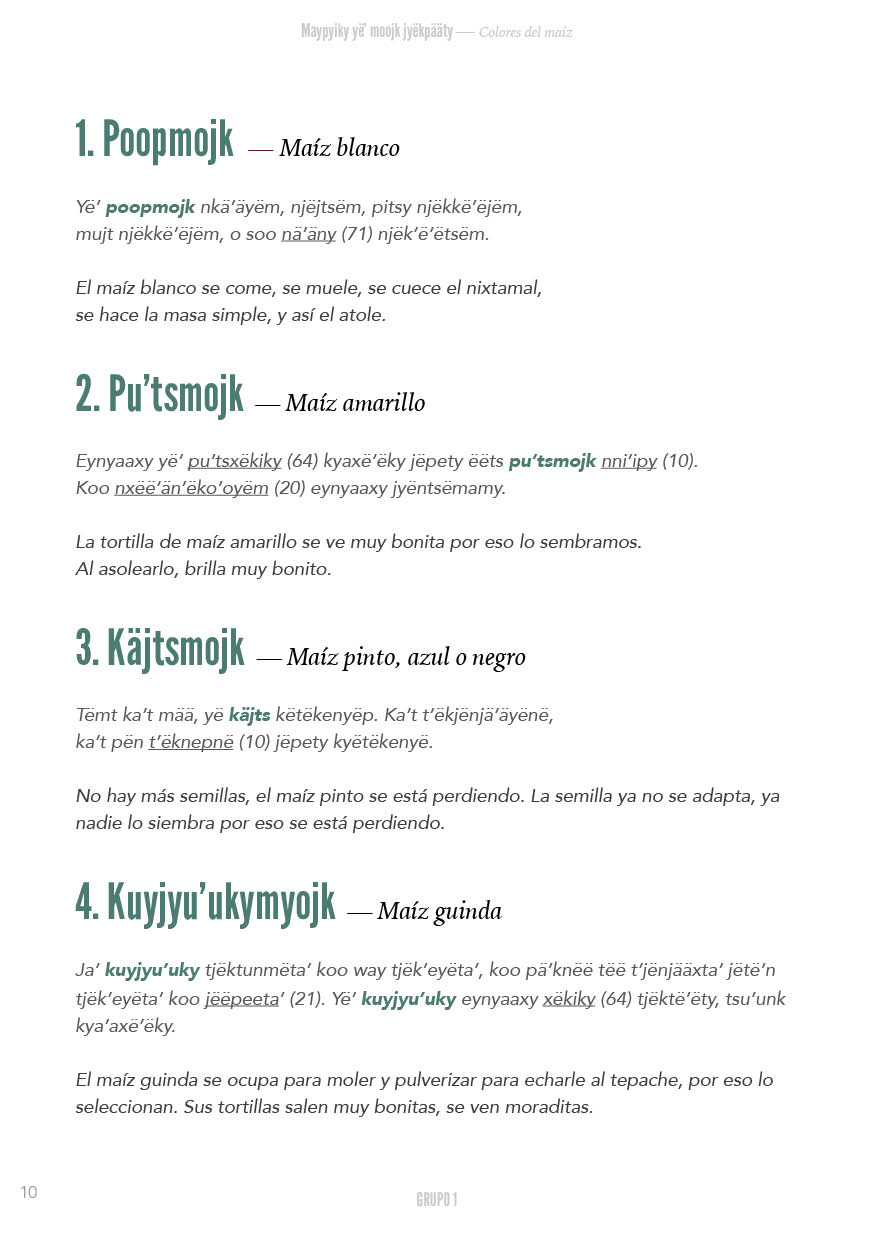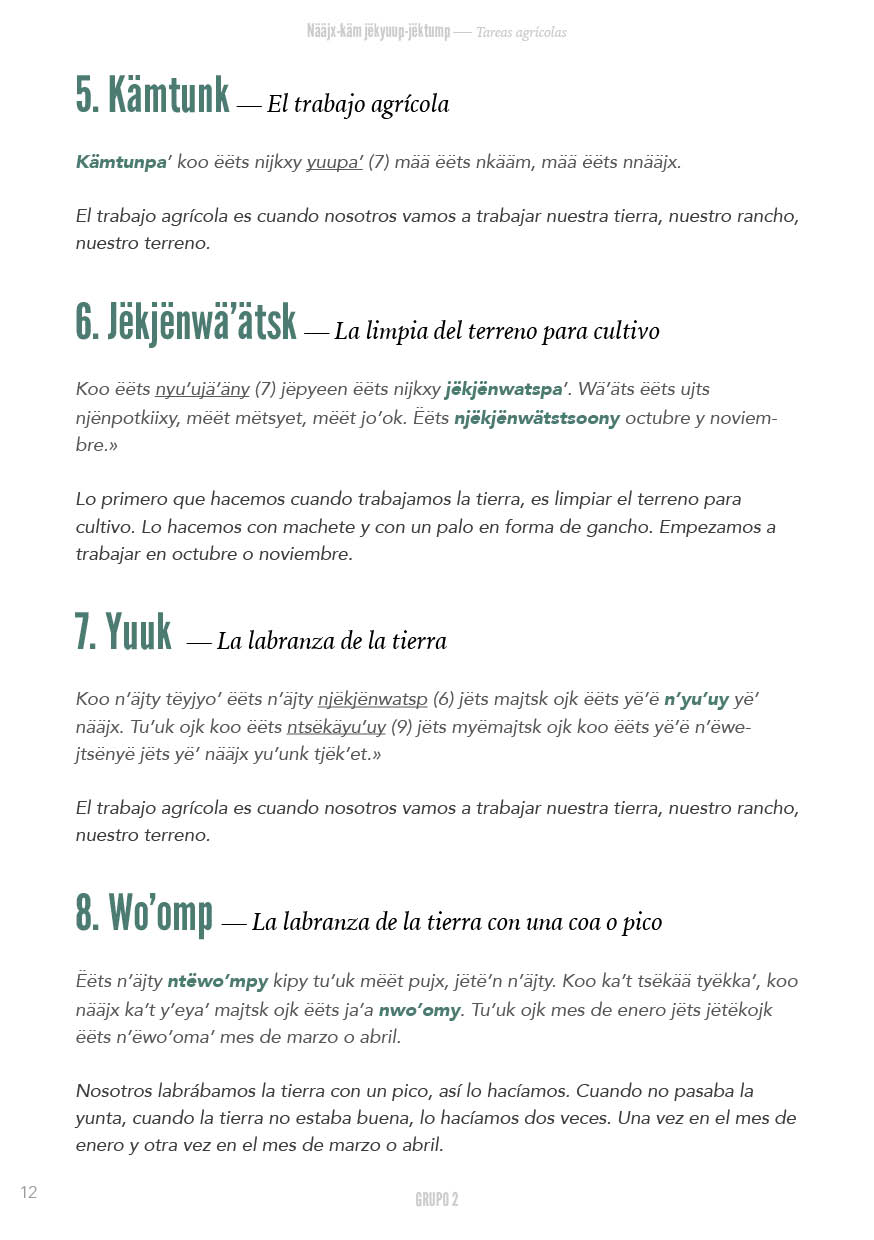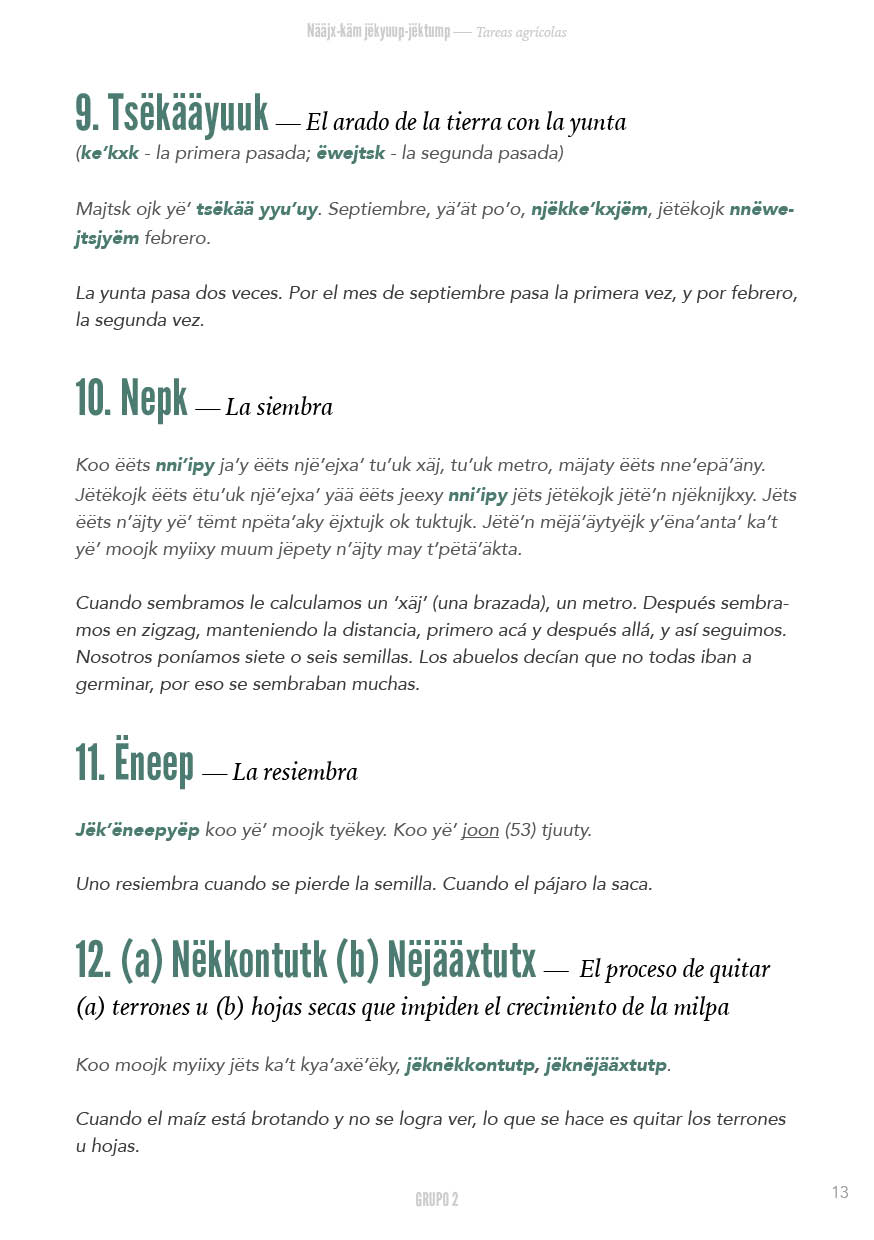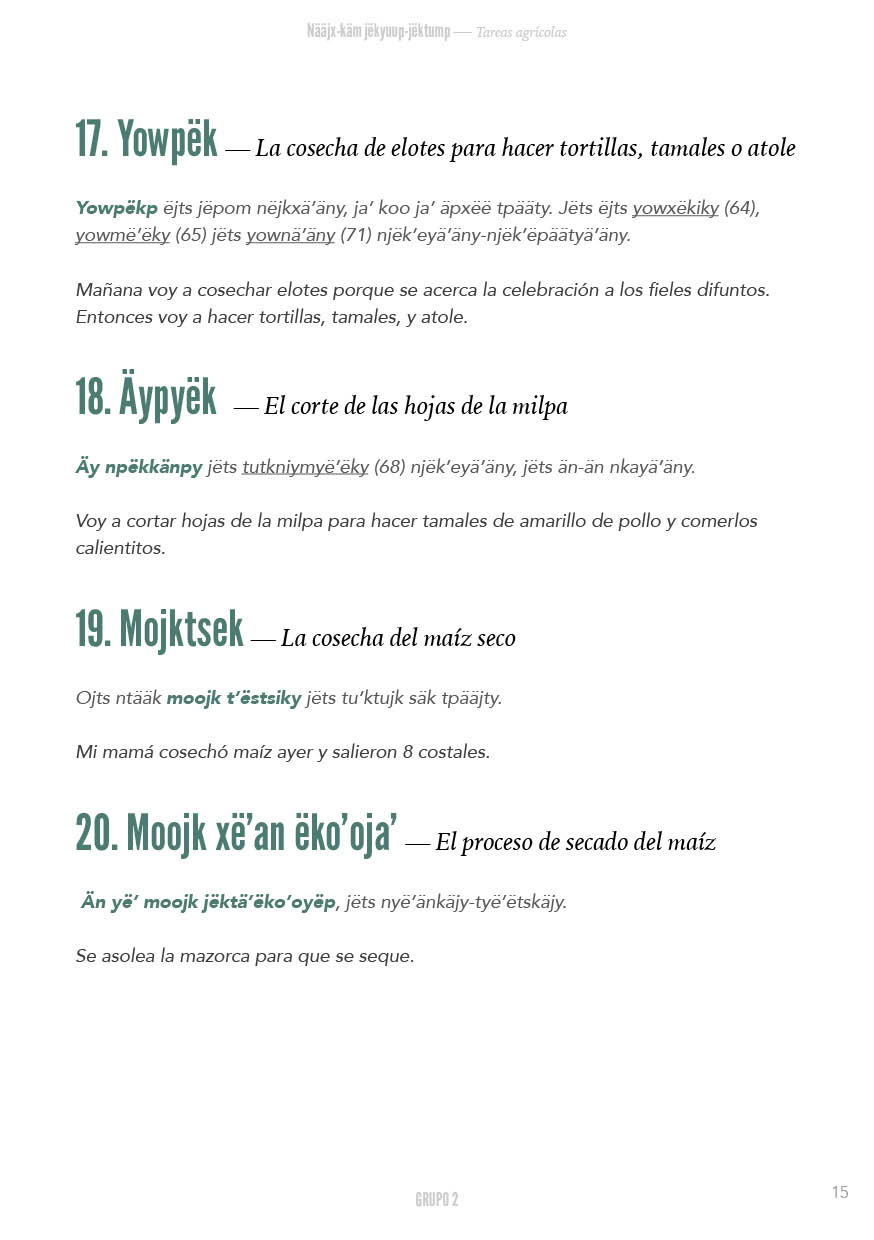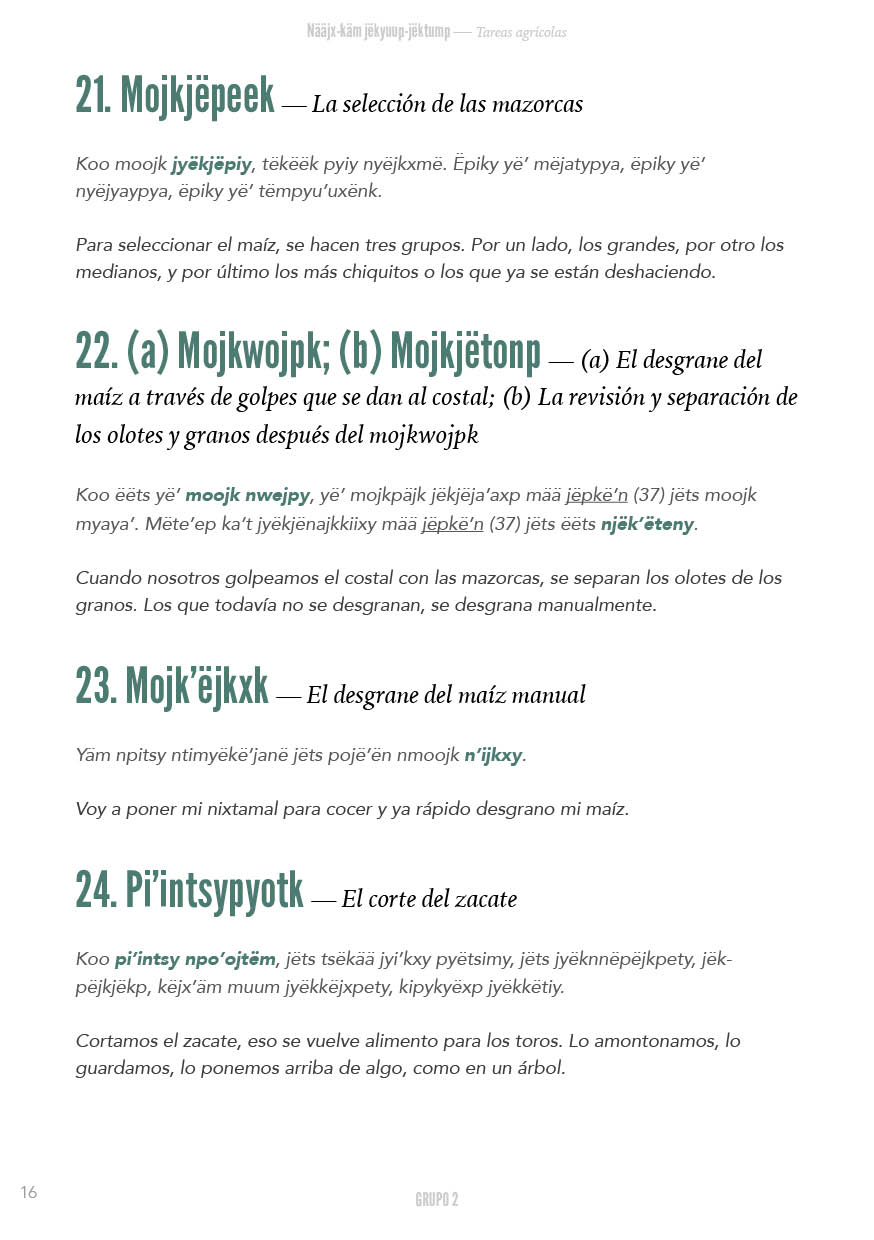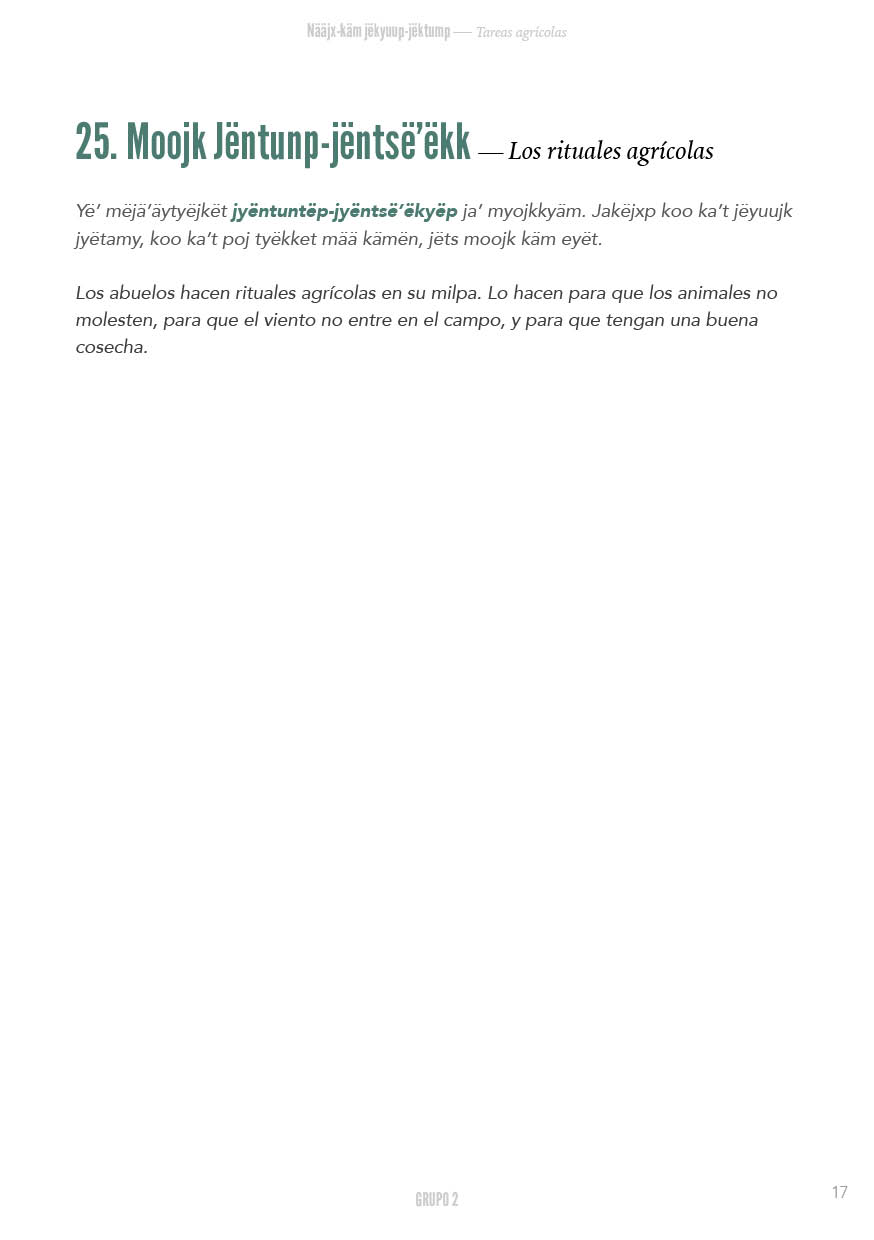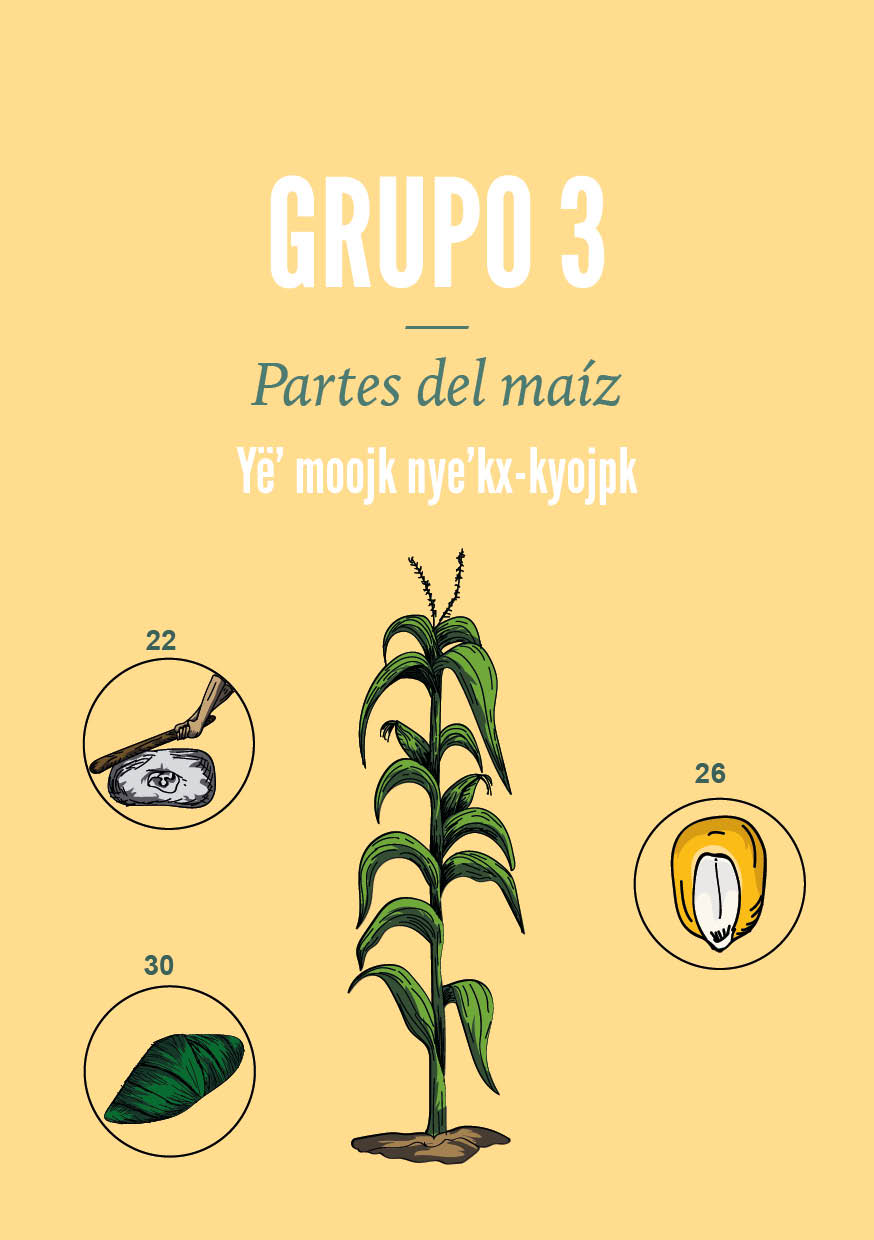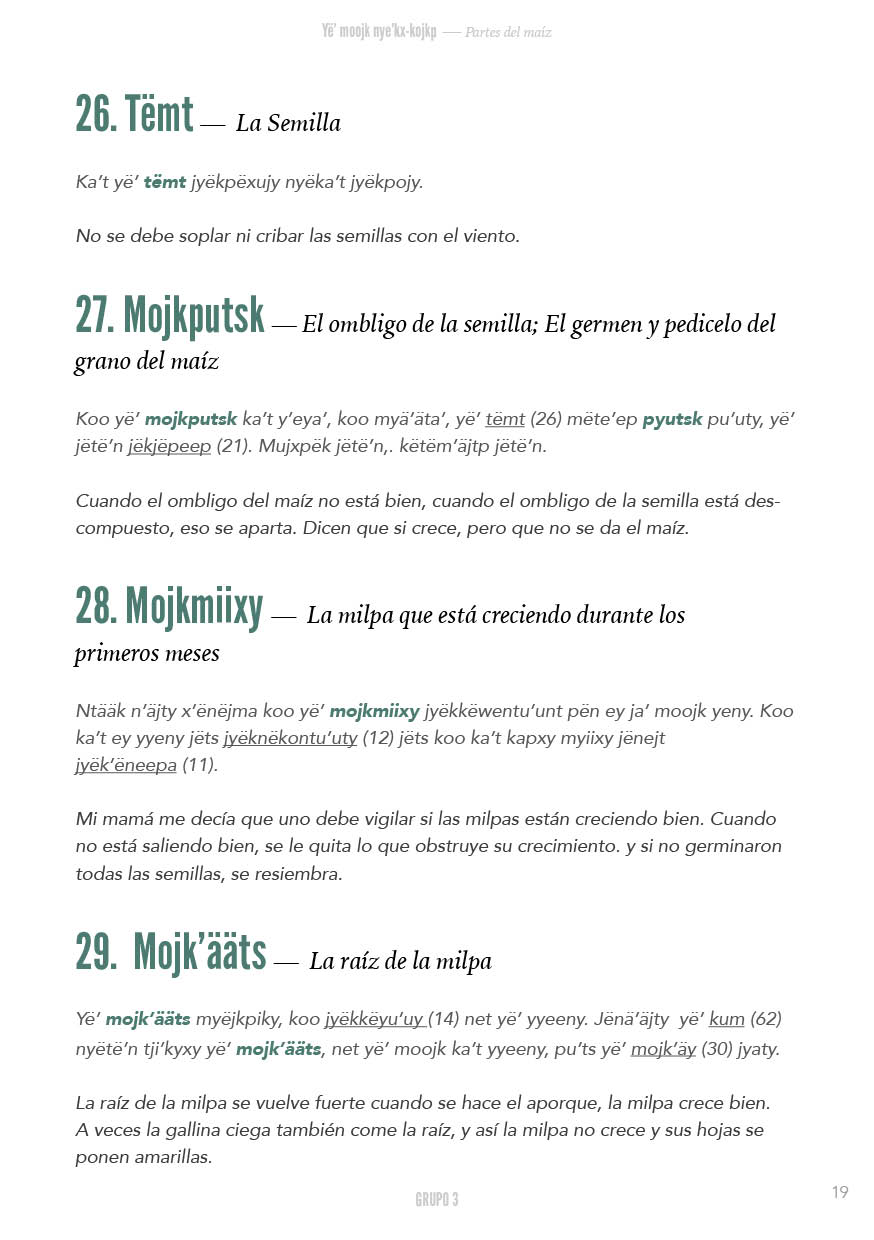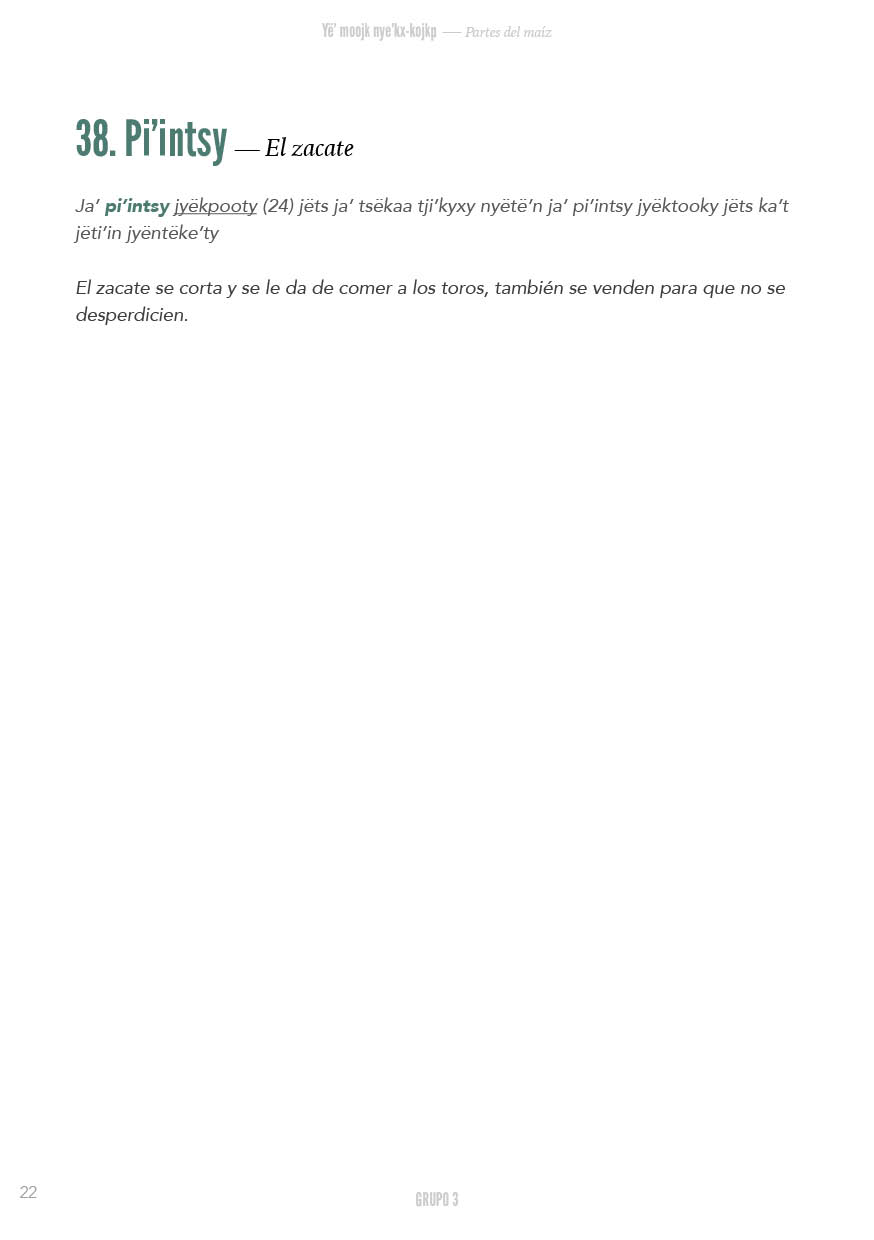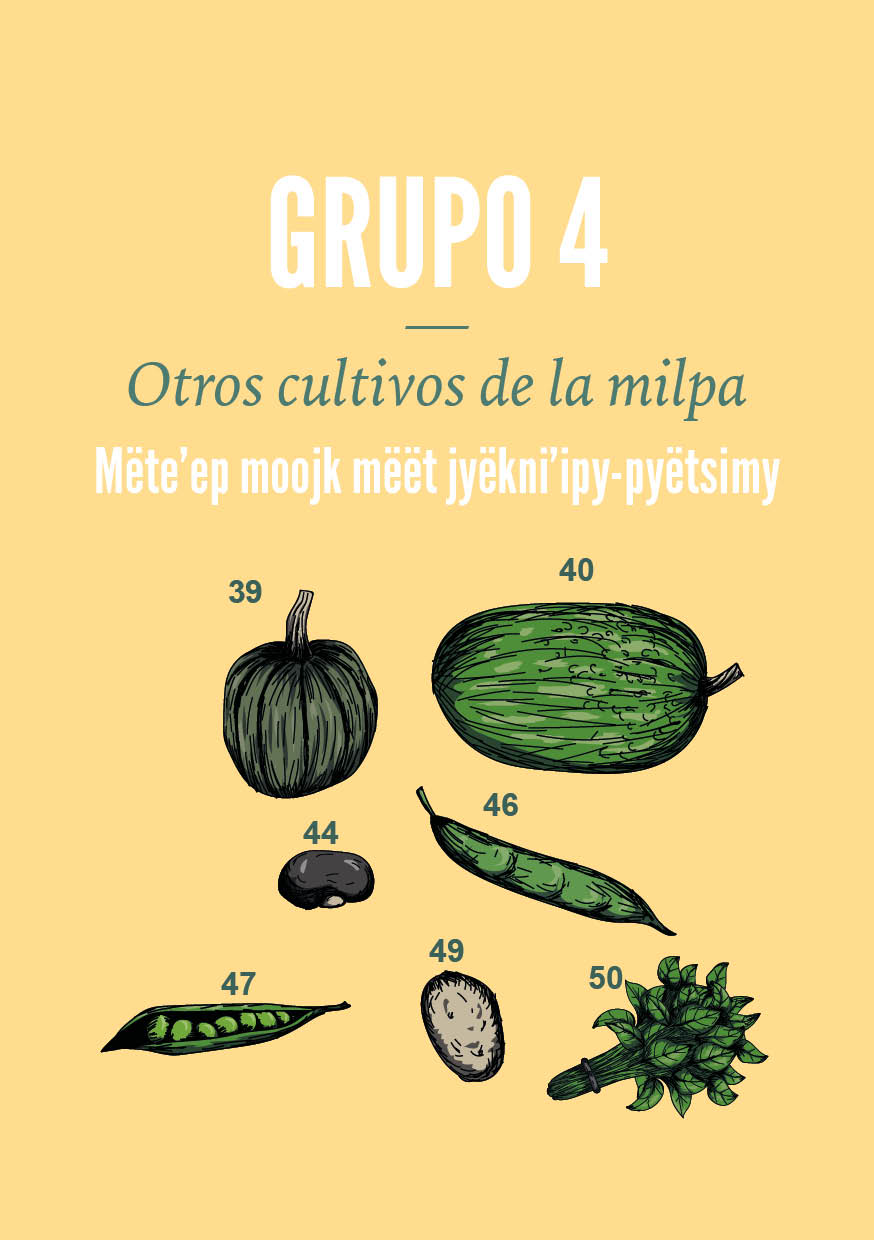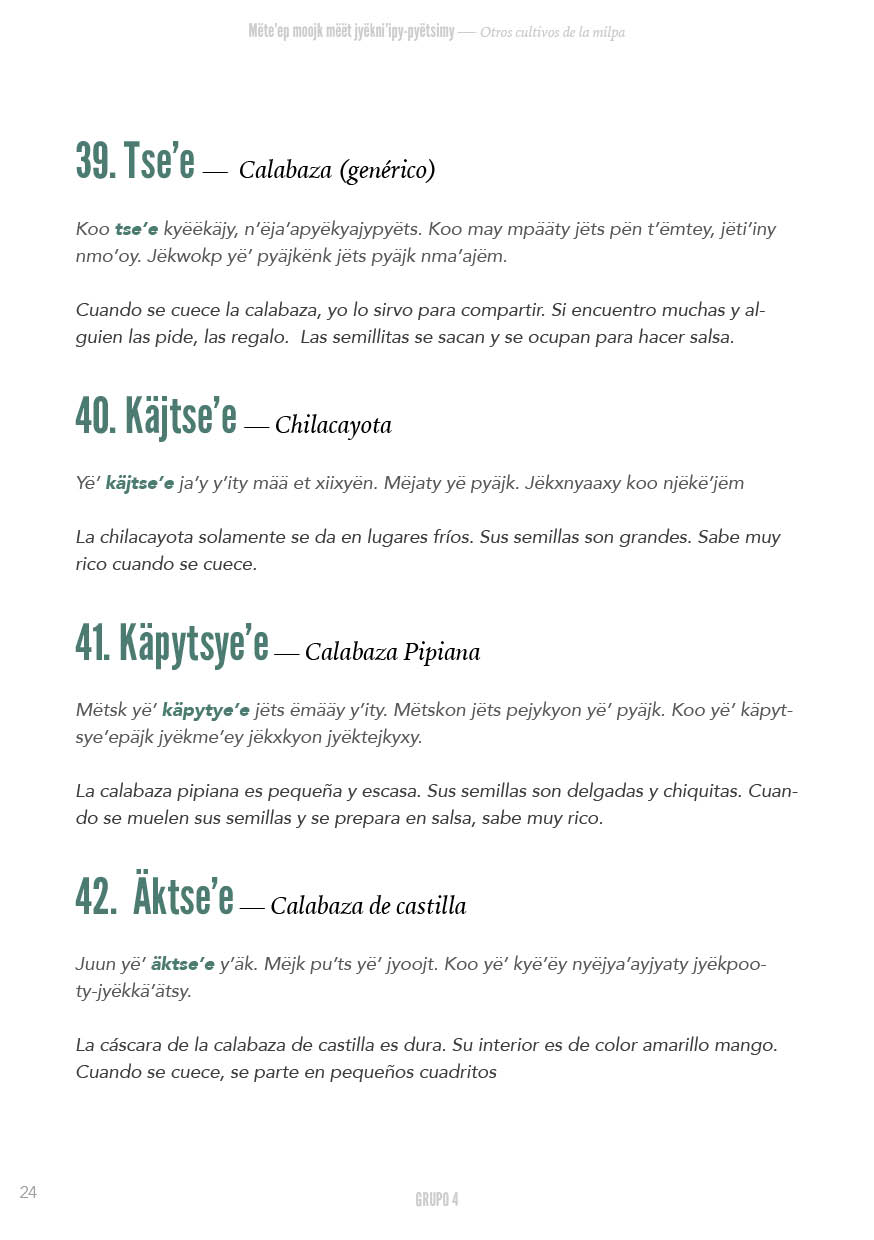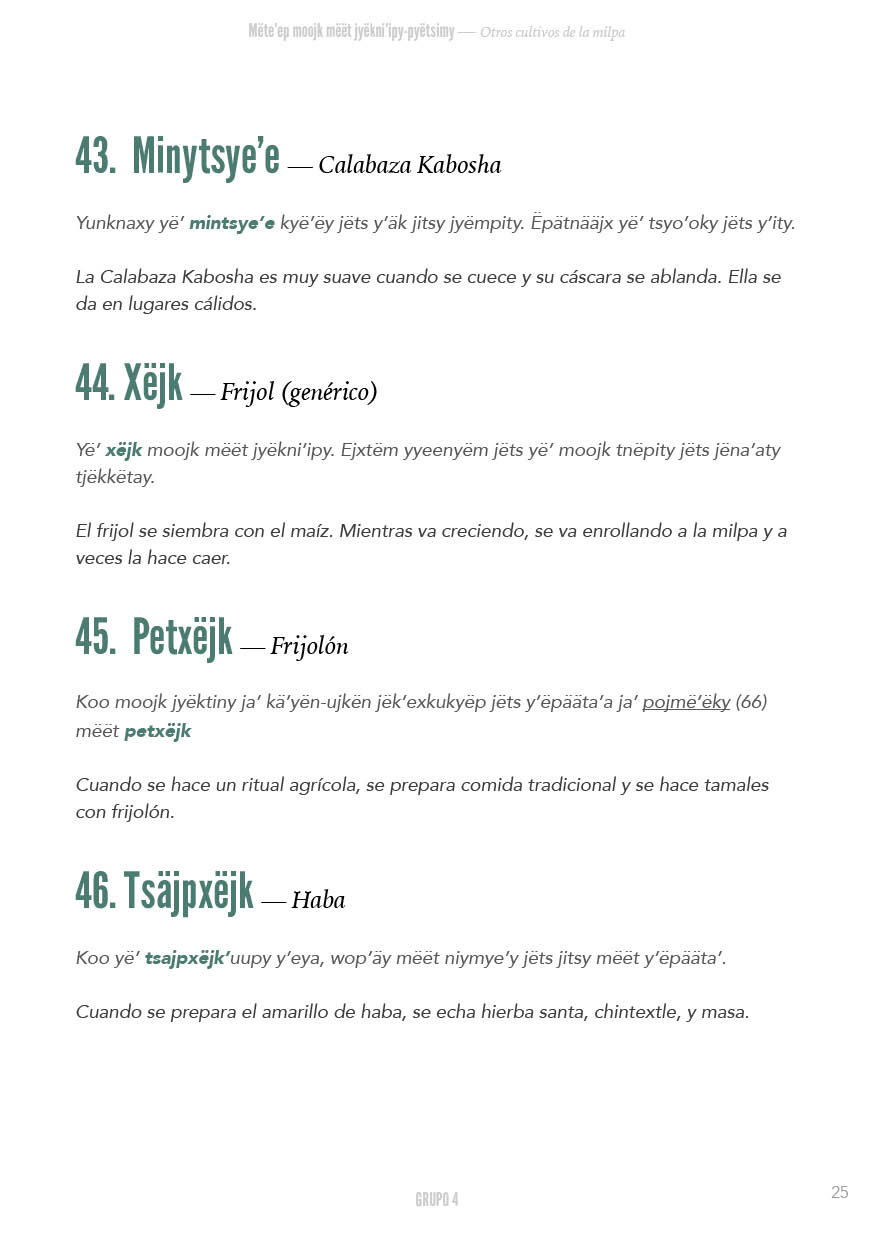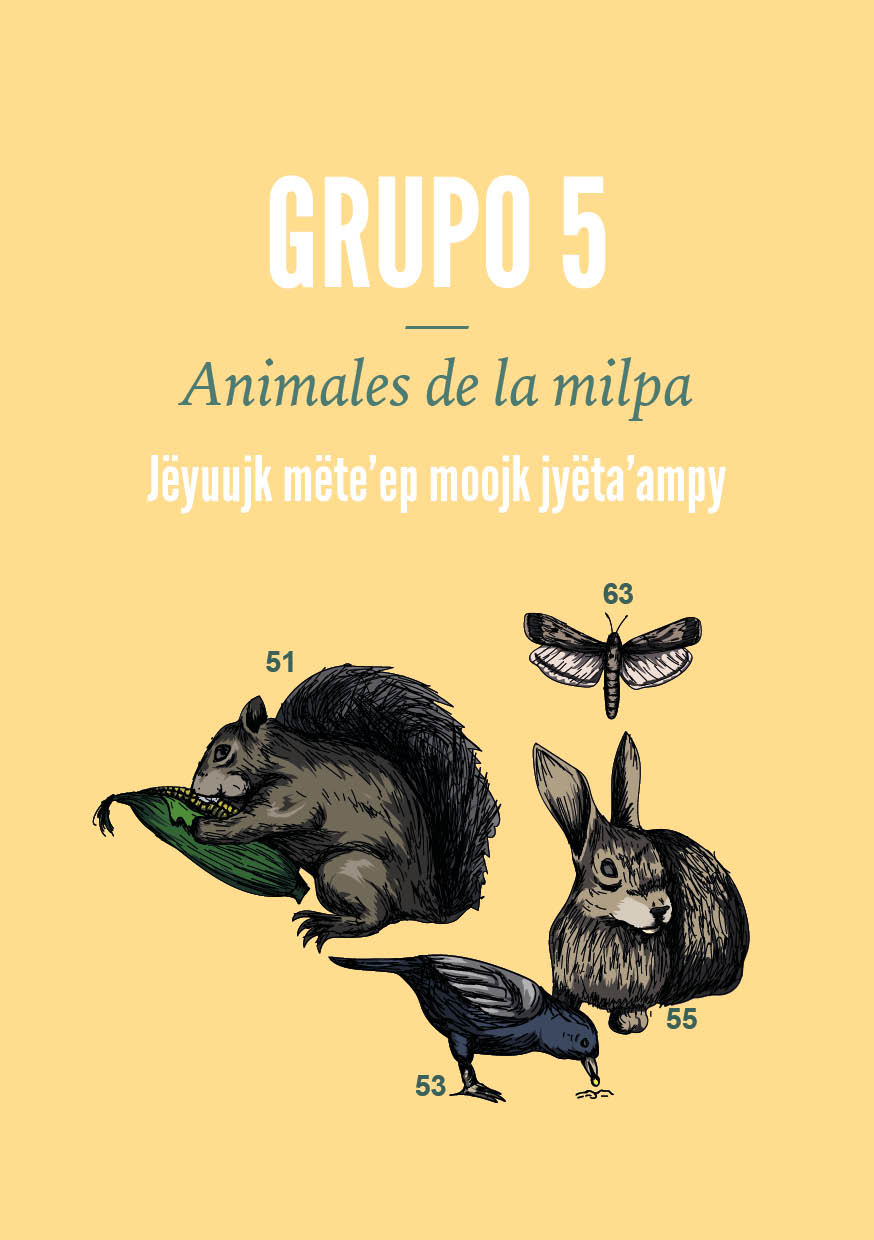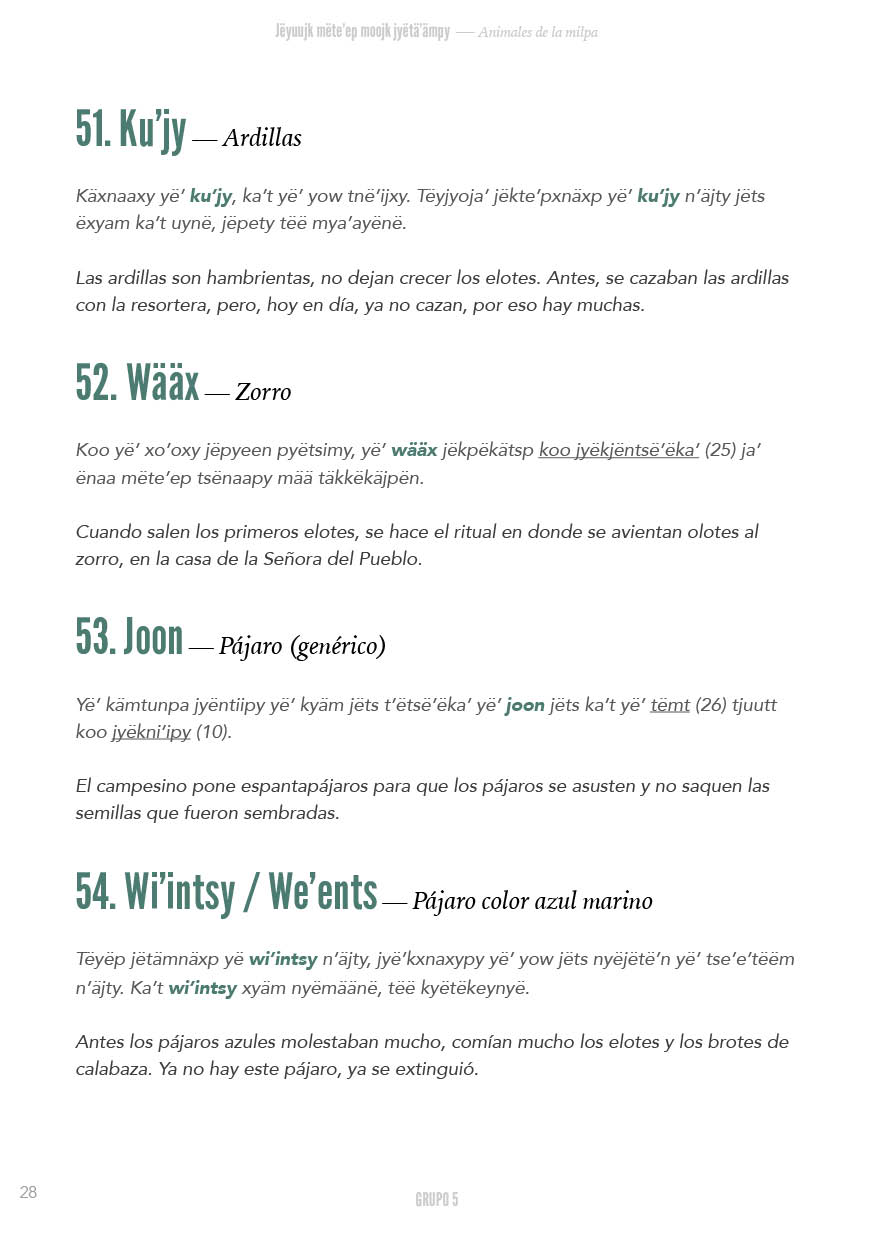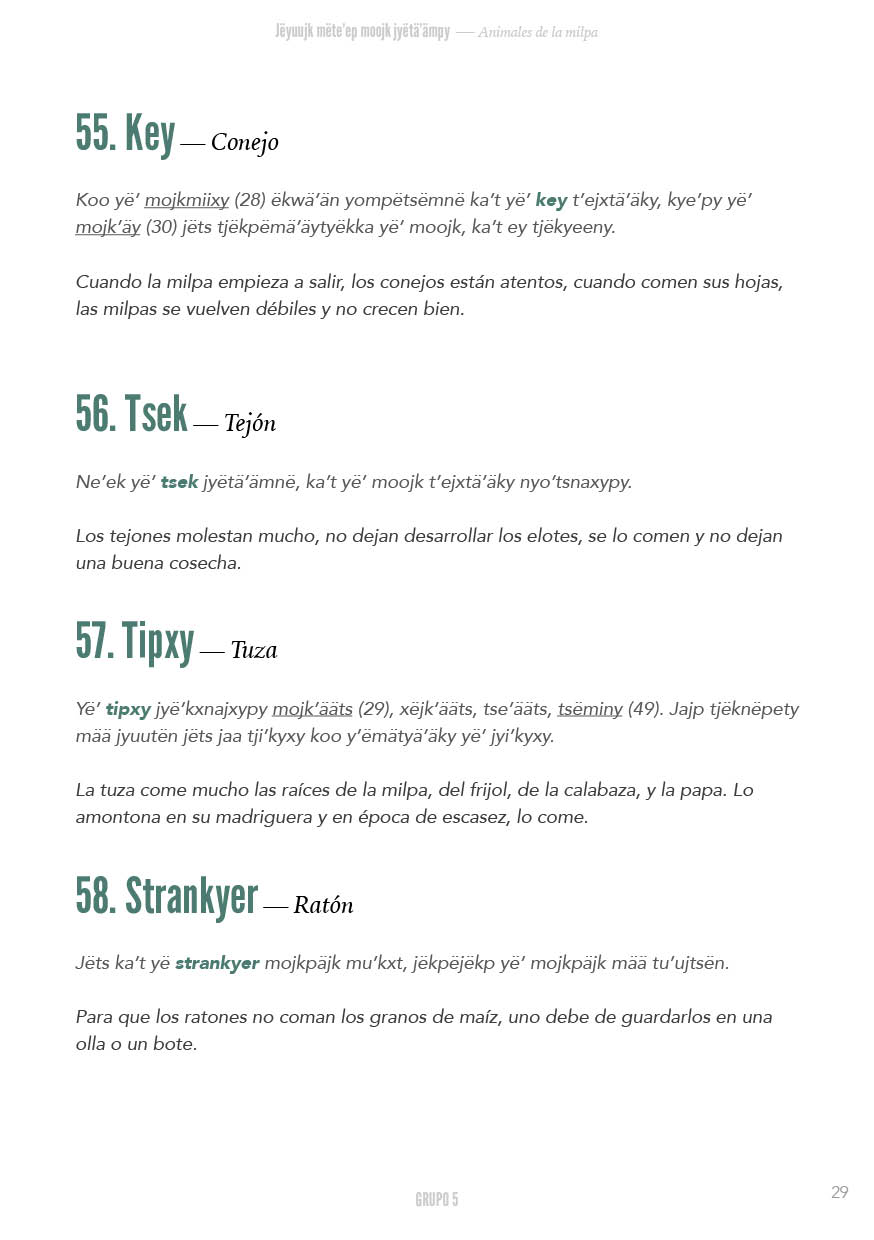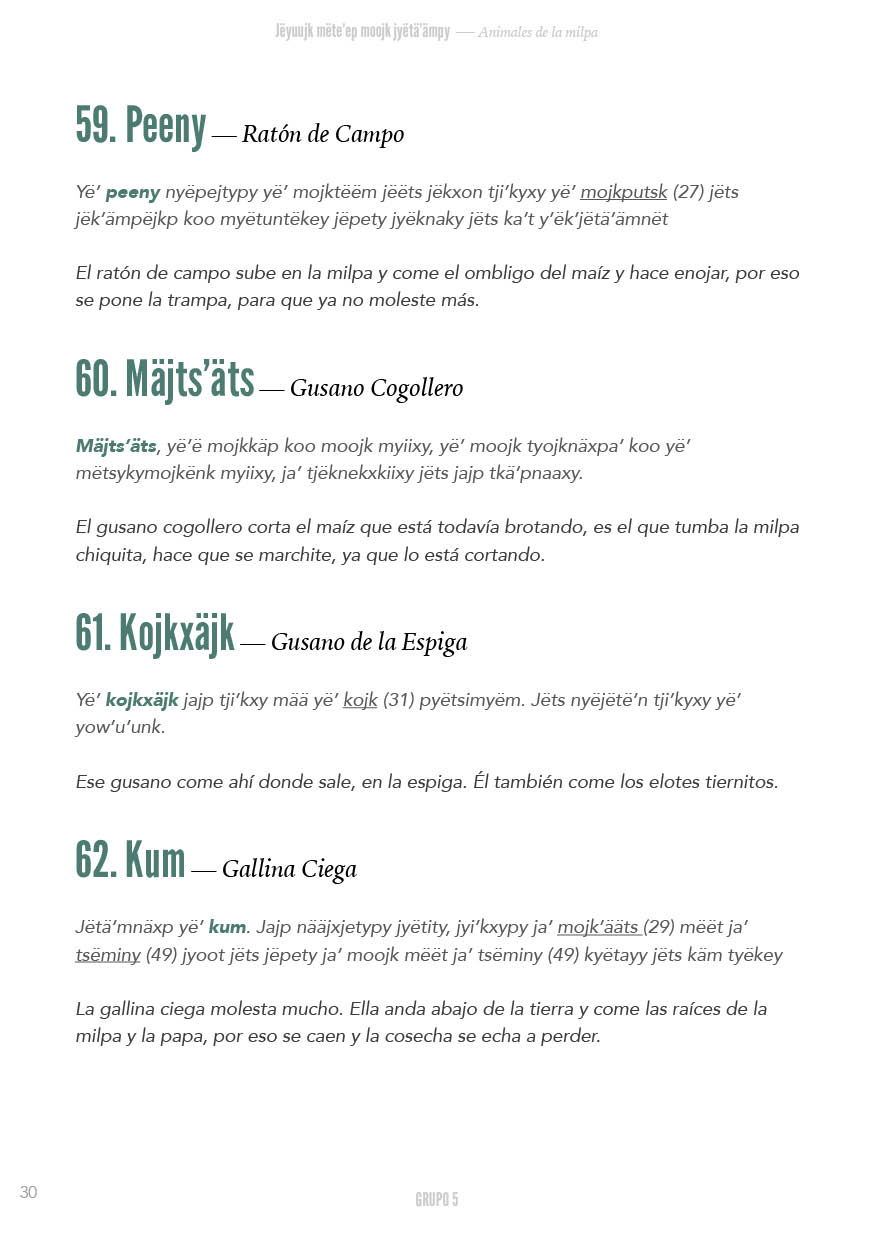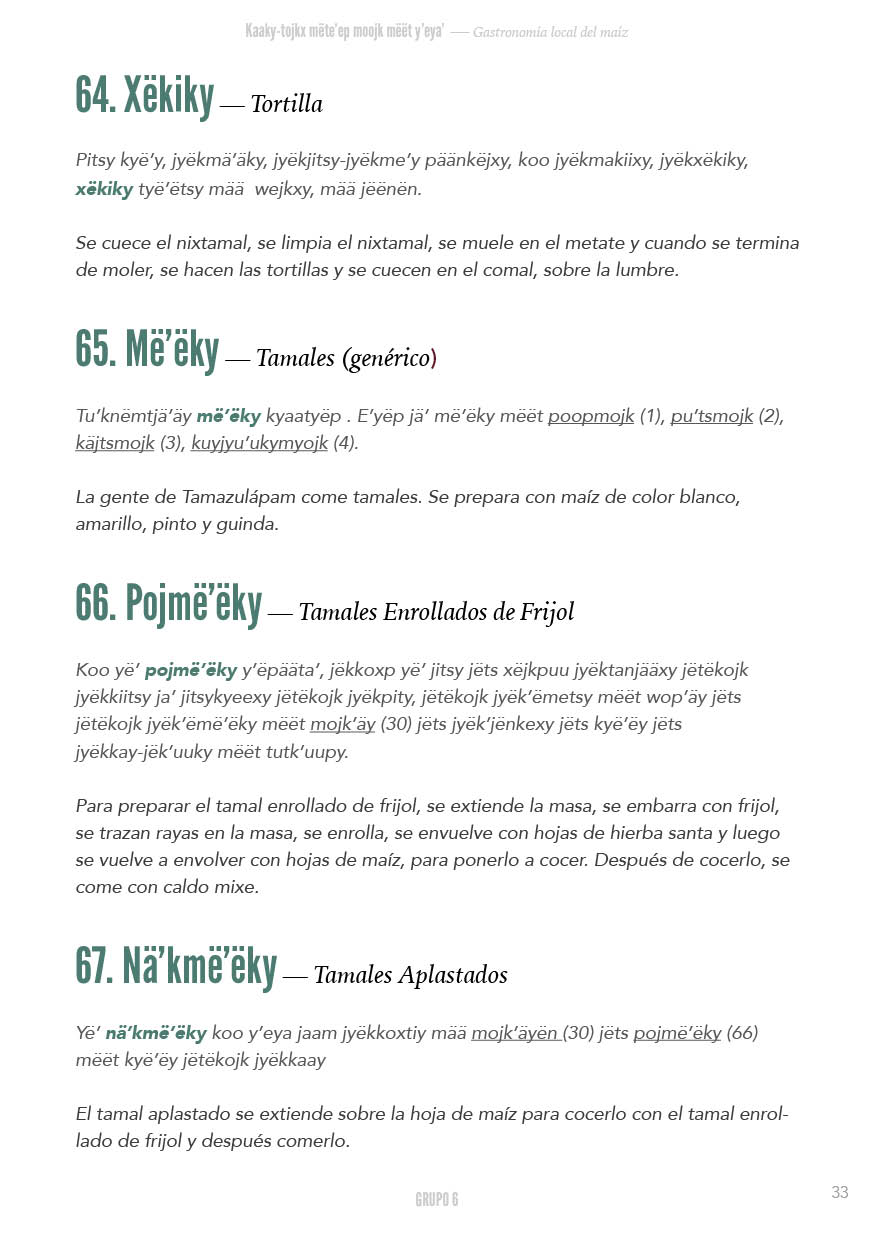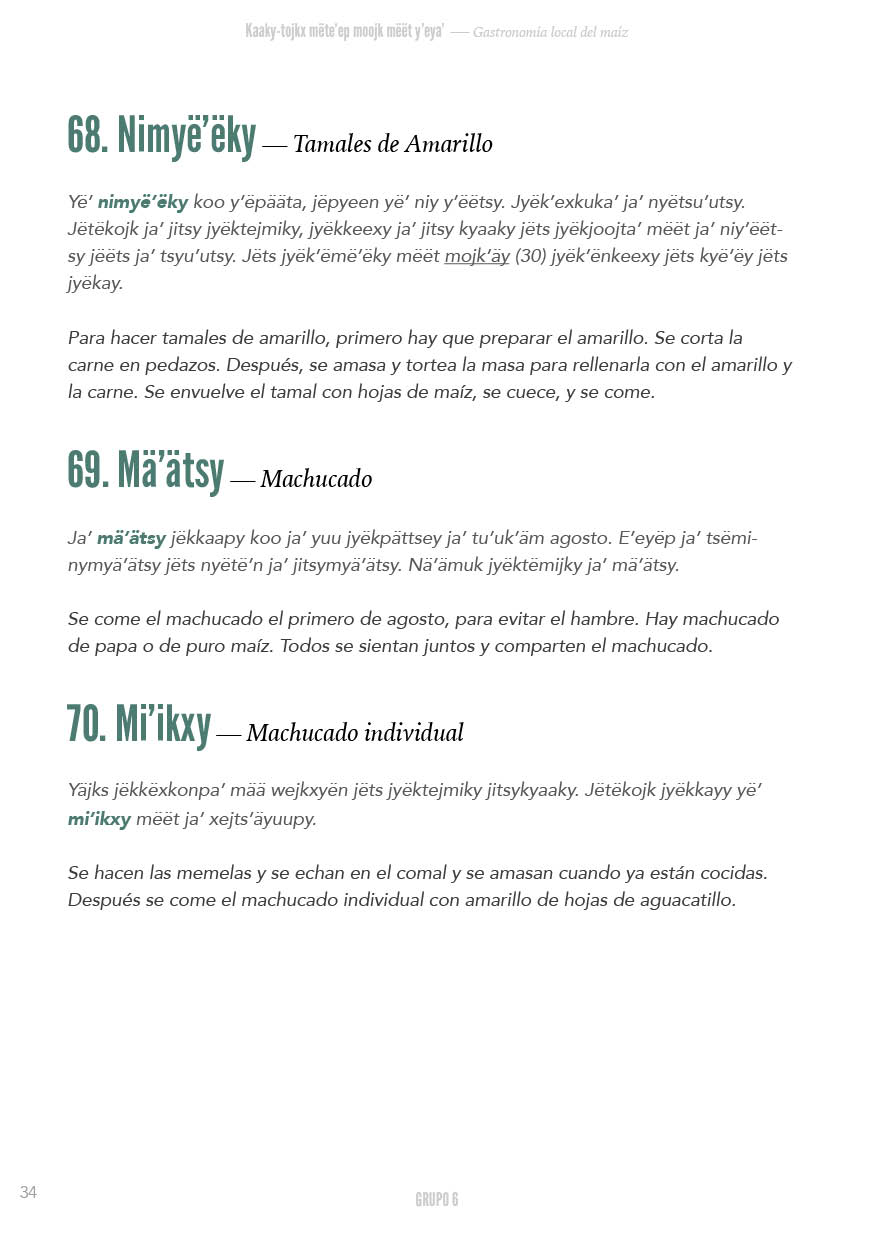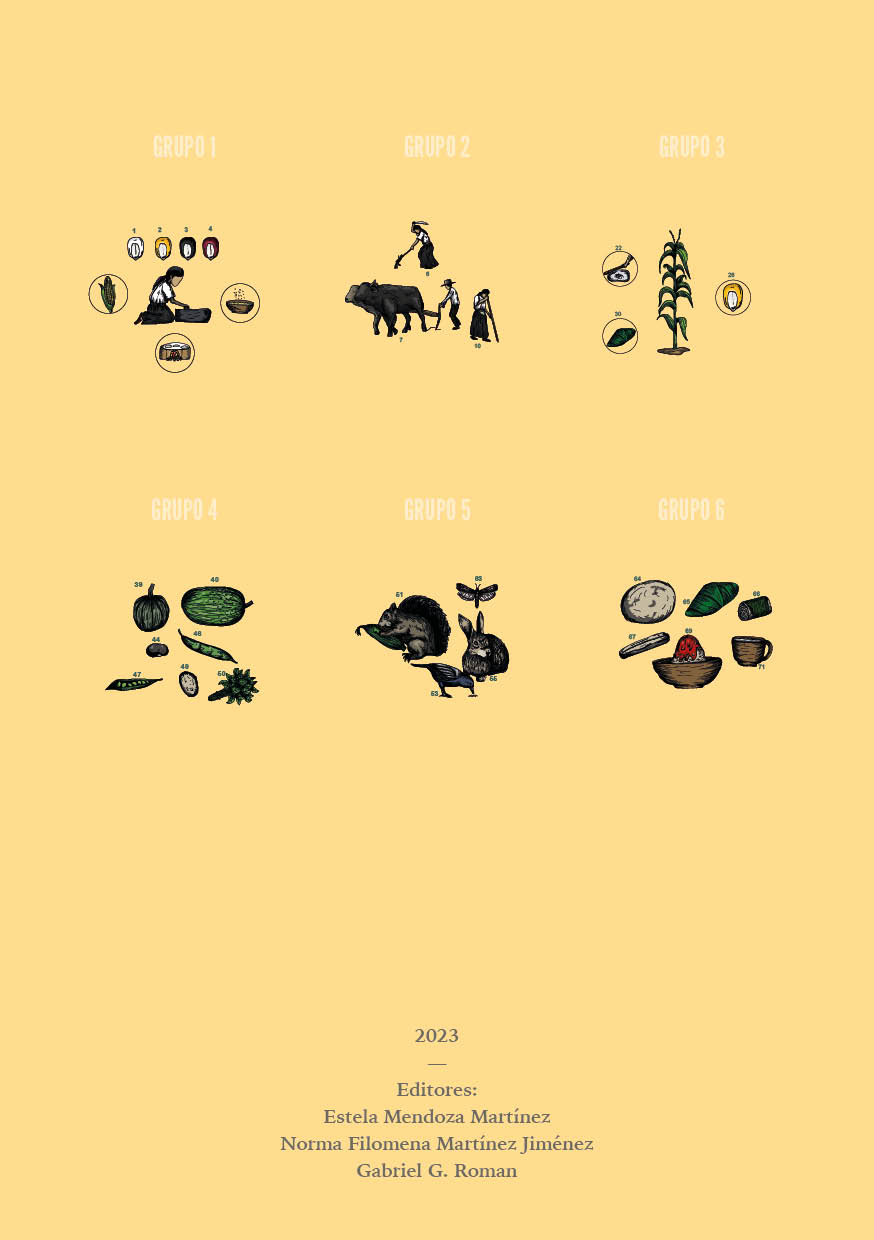Mixe Glossary of Maize Cultivation
The Mixe Glossary of Maize Cultivation attempts to register some of the most important maize-related words and expressions in the variant of the Mixe language spoken in Tamazulápam del Espíritu Santo. I had initially thought of creating a seeds catalogue to give the community a tangible outcome of my research. However, as I discussed with collaborators, it became apparent that such a classifying practice was not attuned to the way people engage with their seeds. Although seeds are often categorized according to their color and, to a lesser degree, time of maturation, such classification is only broadly applied. That is, within a category such as poopmojk (white maize), there are multiple different groups of seeds which, despite having their differences acknowledged, remain unnamed. Cultivators seem to put much more emphasis, instead, on the relations they can have with their own seeds and soil. They often talked about, for instance, how their seeds were able to ‘jyënjowa’ (adapt) to their fields, to ‘nyääjx tpääty’ (find their soil). It was by attending to such Mixe expressions which are central to local agriculture that we decided to focus, instead, on language. Inspired by the local effort to revitalize the Mixe variant of Tamazulápam, we chose to turn the catalogue into a glossary. It was also through working with the municipal authority branch entitled Instancia de la Mujer that the role of women cultivators took center stage, as they have played a vital role in safeguarding not only the local seeds, but also the local language.
This was an inherently collaborative project. It is the outcome of a collaboration with the Instancia de la Mujer, namely the representatives Norma Filomena Martínez Jiménez and Estela Mendoza Martínez. We interviewed five elderly peasant women (Adela Juana Crisanto, Josefa María Rosa, María Rosa Bárbara, Natalia Pérez González, and Victoria Cruz Medel), who are experts in both maize cultivation and the local language. They were kind enough to share some of their vast knowledge with us and, through the glossary, with others inside and outside the community. We also collaborated with the local graphic designer Michael Karim Baltazar Martínez and teacher Rutilia Ibarra Lara. Our main purpose was to produce a pedagogical text that would record some local agricultural knowledge and could serve as a tool for people seeking to learn more about this topic, especially the younger generation. We hope that this booklet can help both Mixe community members and other readers reflect on the importance of indigenous languages and to value the vital work and knowledge of peasant women.






